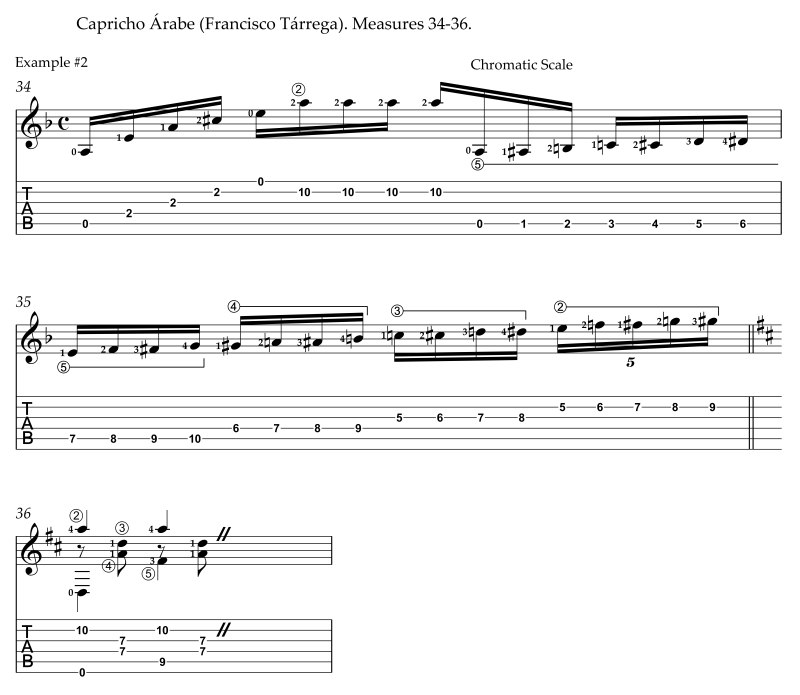VERTICAL SHIFTS:
HOW TO MOVE THE LEFT HAND ACROSS THE FRETBOARD

"Douglas who?"
Douglas Niedt is a successful concert and recording artist and highly respected master classical guitar teacher with 50 years of teaching experience. He is Associate Professor of Music (retired), at the Conservatory of Music and Dance, University of Missouri-Kansas City and a Fellow of the Henry W. Bloch School of Management—Regnier Institute for Entrepreneurship and Innovation.
Doug studied with such diverse masters as Andrés Segovia, Pepe Romero, Christopher Parkening, Narciso Yepes, Oscar Ghiglia, and Jorge Morel. Therefore, Doug provides solutions for you from a variety of perspectives and schools of thought.
He gives accurate, reliable advice that has been tested in performance on the concert stage that will work for you at home.
PURCHASE AN ALL-ACCESS PASS
TO THE VAULT OF CLASSICAL GUITAR TECHNIQUE TIPS

"Hello Mr Niedt,
My name's Gretchen, and I'm so happy I purchased an All-Access Pass to the Vault. I love your awesome technique tips. I'm amazed how much I have improved my playing.
Thank you!"
ARE YOU LOOKING FOR PROVEN STRATEGIES
THAT WILL MAKE YOU A BETTER GUITARIST?
Check out the game-changing tips in my Vault—I promise they will kick your playing up to the next level.
Purchase an All-Access Pass to the Vault.
It's a one-time purchase of only $36!
You receive full access to:
- Over 180 technique tips in The Vault.
- Special arrangements of Christmas music
- Arrangement of the beautiful Celtic song, Skellig
- Comprehensive guide, How to Master the Classical Guitar Tremolo
All that for a one-time payment of only $36. Take me to the page to Purchase an All-Access Pass
VERTICAL SHIFTS:
HOW TO MOVE THE LEFT HAND ACROSS THE FRETBOARD
By Douglas Niedt
Copyright Douglas Niedt. All Rights Reserved.
This article may be reprinted, but please be considerate and give credit to Douglas Niedt.
We have two types of directional shifts:
- The transversal or horizontal shift up and down the neck.
- When we move our left hand from the 1st to the 12th fret, we are moving UP the neck. We move from lower-pitched notes to higher-pitched notes.
- When we move our left hand from the 12th to the 1st fret, we are moving DOWN the neck. We move from higher-pitched notes to lower-pitched notes.
- Guitarists call these shifts that move up and down the neck transversal or horizontal shifts. The transversal or horizontal shifts are the subject of much discussion and dozens of instructional videos.
- The vertical or across-the-fretboard shift.
- We move our hand across the neck from the bass strings to the treble strings and from the treble strings to the bass strings.
- Some guitarists call these shifts that move across the neck vertical shifts. They are vertical in that we move the hand up and down in relation to the floor. We can also call them across-the-fretboard shifts.
- Guitarists seldom discuss vertical shifts.
★Sometimes you will also hear the terms longitudinal, latitudinal, and lateral shifts. However, there is inconsistency in terminology among writers, with some referring to a transversal (up and down the neck) shift as a longitudinal shift, while others use 'longitudinal' to describe movement across the fretboard. Therefore, it is best to avoid using those terms.
Watch me demonstrate the two types of shifts in Video #1.
VERTICAL OR ACROSS-THE-FRETBOARD-SHIFTS
There are five ways to execute the vertical or across-the-fretboard shift.
1. Keep the left-hand thumb on the bass-string side of the neck.
Rock the left arm, elbow, and wrist with a continuous pronounced movement, forward and back, as your left-hand fingers move back and forth from the bass strings to the treble strings. This thumb position keeps the left wrist slightly arched when playing the bass strings and relatively flat when playing the treble strings.
Watch me demonstrate keeping the left-hand thumb on the bass string side of the neck in Video #2.
2. Keep the left-hand thumb on the treble-string side of the neck.
Rock the left arm, elbow, and wrist with a continuous pronounced movement, forward and back, as your left-hand fingers move back and forth from the treble strings to the bass strings. This thumb position keeps the left wrist relatively flat when playing the treble strings but very arched when playing the bass strings. This left-hand thumb position also requires a larger rocking motion of the left arm, elbow, and wrist than Option #1.
Watch me demonstrate keeping the left-hand thumb on the treble-string side of the neck in Video #3.
3. Keep the left-hand thumb in the middle of the neck.
Rock the left arm, elbow, and wrist continuously forward and back as your left-hand fingers move back and forth from the bass strings to the treble strings. This left-hand thumb position requires a moderate rocking motion of the left arm, elbow, and wrist and moderate arching of the wrist for both the bass and treble strings.
Watch me demonstrate keeping the left-hand thumb in the middle of the neck in Video #4.
4. Allow the thumb to “travel.”
The thumb “travels” from the bass-string side of the neck to the treble-string side of the neck as the left-hand fingers move from string to string. Each time the fingers play a different string, change the position of the left-hand thumb. Allowing the thumb to travel requires a moderate rocking motion of the left arm, elbow, and wrist. Plus, it maintains optimal left-hand wrist arch for playing on any string. However, some players may find that constantly changing the position of the thumb is distracting and feels less stable and secure.
Watch me demonstrate how to allow the thumb to “travel” from the bass-string side of the neck to the treble-string side of the neck with each change of string in Video #5.
5. Move the left-hand thumb from the bass-string side of the neck when playing the bass strings to the treble-string side of the neck when playing the treble strings.
Changing the position of the thumb means the left arm, elbow, and wrist only need to rock once (as the thumb changes position) rather than continuously, as with the “traveling thumb.” The wrist stays relatively flat for both the bass and treble strings.
However, the left-hand thumb may momentarily lose contact with the neck when it changes positions, which may make it feel unstable. Rather than lifting the left-hand thumb to reposition it, slide it from the bass to the treble side of the neck.
Watch me demonstrate moving the left-hand thumb from the bass-string side of the neck when playing the bass strings to the treble-string side of the neck when playing the treble strings in Video #6.
Each of these left-hand thumb positions could be a good choice, depending on the passage. Hand size and left-hand thumb length will also affect your choice. However, I find that choice #3, keeping the left-hand thumb in the middle of the neck, is the most versatile and stable. It requires only moderate rocking of the left arm, elbow, and wrist with moderate arch of the left wrist, whether you are playing the treble or the bass strings.
In measures #11-12 of “Étude No. 7” by Heitor Villa-Lobos, we have this fast scale. Example #1:

Watch me play it using Vertical Shift Type #3, keeping the left-hand thumb in the middle of the neck. Video #7:
Let’s look at another example. We have a long chromatic scale in measures 34-36 of “Capricho Árabe” by Francisco Tárrega.

Depending on how you finger the scale, the left hand must shift vertically from the 5th string to the 2nd or 1st string.
If we use a traditional fingering, such as the one above, which shifts from the 5th string to the 2nd string, we can play the entire scale with the thumb on the bass-string side of the neck with no rocking of the left arm. However, at the end of the scale, the position of the left wrist may feel a little odd to some. Watch me demonstrate in Video #8:
Or, we can start with the thumb on the bass-string side of the neck, and when we reach the 3rd string, move the thumb to the middle of the neck. That approach requires the left arm to rock forward one time. The arch of the left wrist will stay consistent. Watch me demonstrate in Video #9:
Or, we can start with the thumb on the bass-string side of the neck and let it gradually "travel" towards the treble side as the left-hand fingers move to each new string. That approach requires several left-arm movements but keeps the arch of the left wrist the same throughout the scale. Watch me demonstrate in Video #10:
SUMMARY
For most passages, the best way to execute vertical shifts (across-the-fretboard shift) is to keep the left-hand thumb in the middle of the neck. Rock the left arm, elbow, and wrist continuously forward and back as your left-hand fingers move back and forth from the bass strings to the treble strings. This left-hand thumb position requires only a moderate rocking motion of the left arm, elbow, and wrist and moderate arching of the wrist for both the bass and treble strings. Plus, the thumb stays in one spot, enhancing the stability of the hand.
